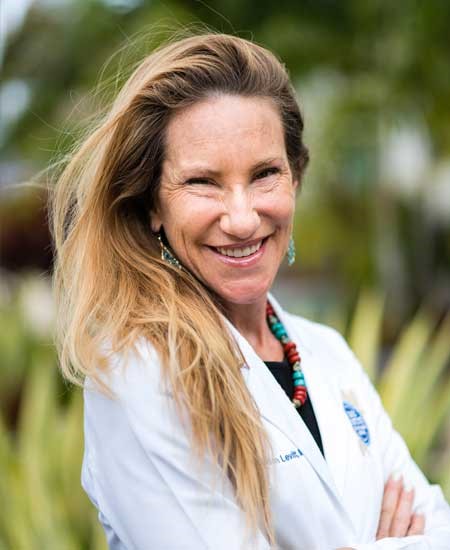
The first thing your immune cells do before they fight off an invading pathogen like a virus is search for vitamin D.
If this isn’t at an optimal level, your immune system won’t function properly.
You see, vitamin D has anti-inflammatory properties that are necessary for the activation of your immune system defenses.1
Plus, this nutrient also strengthens the macrophages in your white blood cells — thus supporting your body’s innate immunity. Innate immunity is of particular importance in times like this, when new viruses appear in our world.2
Low levels of vitamin D will increase your risk of infection and immune-related disorders3 including:
- Respiratory diseases like tuberculosis, asthma and COPD
- Viral and bacterial respiratory infections, and
- Decreased lung function, which may affect your body’s ability to fight respiratory infections
Innate Immunity In Your Respiratory Tract
Vitamin D also helps boost your immune system by stimulating naturally occurring antimicrobial peptides, which protect the body by destroying invading microbes.
These peptides live in immune cells throughout your body — including the cells that line your upper and lower respiratory tract. There, they are able to directly fight off viruses and bacteria that cause common immune and respiratory infections like colds and flu.4
The research backs it up. In 2017, a review of 25 different clinical trials that followed 11,321 people showed that taking vitamin D reduces the odds of developing a respiratory infection by 42%.5
A second study by researchers at the University of Colorado Anschutz Medical Campus found that high doses of vitamin D can reduce the frequency of acute respiratory illness (ARI) in adults 60 years and older living in nursing homes by as much as 40%.6
If you think you are one of the one billion people worldwide with a vitamin D deficiency, I recommend you get your levels checked. We can check these levels here at the Sears Institute in our onsite lab. To schedule an appointment call 561-784-7852.
Three Easy Ways to Get the Vitamin D You Need
These days, almost everyone has a vitamin D deficiency. One large study concluded that 64% of all Americans are vitamin D deficient.7 Another study looked at 1,600 people and found 89% of them had low vitamin D.8
I recommend that you increase your vitamin D during a typical cold and flu season. Obviously, it’s even more important this year that you get enough. Here’s what I tell my patients:
- Eat foods rich in vitamin D. These include small fish like herring, sardines and anchovies. Organic milk from grass-fed cows is also an excellent source, as are egg yolks, cooked salmon and mackerel, tuna fish and orange juice.
A serving of cooked wild salmon and mackerel provide roughly 350 IU vitamin D3 each. Sardines and tuna in oil provide about 225 IU of vitamin D3 each. And one tablespoon of cod liver oil contains nearly 1,400 IU of vitamin D3.
- Get the most out of the sun. Going outside in the sunshine is one of the best ways to get your daily dose of vitamin D. You don’t have to live in South Florida like I do to get enough sunshine and recharge your vitamin D. Get out and catch some rays for 10 to 15 minutes at least a few times per week — if not every day. As little as 10 minutes in the midday sun can provide you with as much as 10,000 IU. And it doesn’t take a lot of sun exposure to make the vitamin D you need. Just 15 to 20 minutes on your face and arms each day provides 10,000 IU.
- Take the right kind of supplement. But don’t rely on the USDA recommendations. The U.S. RDA for vitamin D is 400 IU a day. That’s nowhere near enough. I recommend at least twice that amount…
In one study published in the American Journal of Clinical Nutrition, researchers found that the beneficial amount is 800-1,000 IU a day.9 This is still well under the tolerable upper limit of 2,000 IU a day set by the Institute of Medicine.
And until the coronavirus risk has passed, I’m recommending that my patients take 5,000 IU a day.
Be sure to take a vitamin D3 called cholecalciferol. It’s the same vitamin D3 your body produces. Just be sure to avoid the synthetic form of vitamin D2 in most multivitamins because it is less potent and less absorbable.
In Gratitude,

Dr. Alison Levitt
 |
Dr. Alison Levitt brings more than 23 years of experience in regenerative medicine to the Sears Institute to give her patients total health and wellness – both inside and out.
She specializes in empowering patients to take back their health by maintaining their optimal health. Her patients get the most advanced regenerative medicine therapies to help reverse their health conditions.
References
1. Bivona G, et al. “The immunological implication of the new vitamin D metabolism.” Cent Eur J Immunol. 2018; 43(3): 331–334.
2. Di Rosa M, et al. “Vitamin D3: a helpful immuno-modulator.” Immunology. 2011 Oct; 134(2): 123–139.
3. Aranow Cynthia. “Vitamin D and the immune system. J Investig Med. Aug 2011;59 (6), 881-6.
4. Gombart AF. “The vitamin D-antimicrobial peptide pathway and its role in protection against infection.” Future Microbiol. 2009. 4(9):1151-65.
5. Martineau AR, et al. “Vitamin D supplementation to prevent acute respiratory tract infections: systematic review and meta-analysis of individual participant data.” BMJ. 2017¬;356:i6583.
6. Ginde A, et al. “High-dose monthly vitamin d for prevention of acute respiratory infection in older long-term care residents: a randomized clinical trial.” J Am Geriatr Soc. 2017 Mar;65(3):496-503.
7. Mitchell DM, Henao MP, et al. “Prevalence and predictors of vitamin D deficiency in healthy adults.” Endocr Pract. 2012 Nov-Dec.
8. Schilling S. “Epidemic vitamin d deficiency among patients in an elderly care rehabilitation facility.” Dtsch Arztebl Int. 2012 Jan.
9. Holick MF and Chen TC. “Vitamin D deficiency: a worldwide problem with health consequences.” Am J Clin Nutr. 2008;87(4):1080S-1086S.








